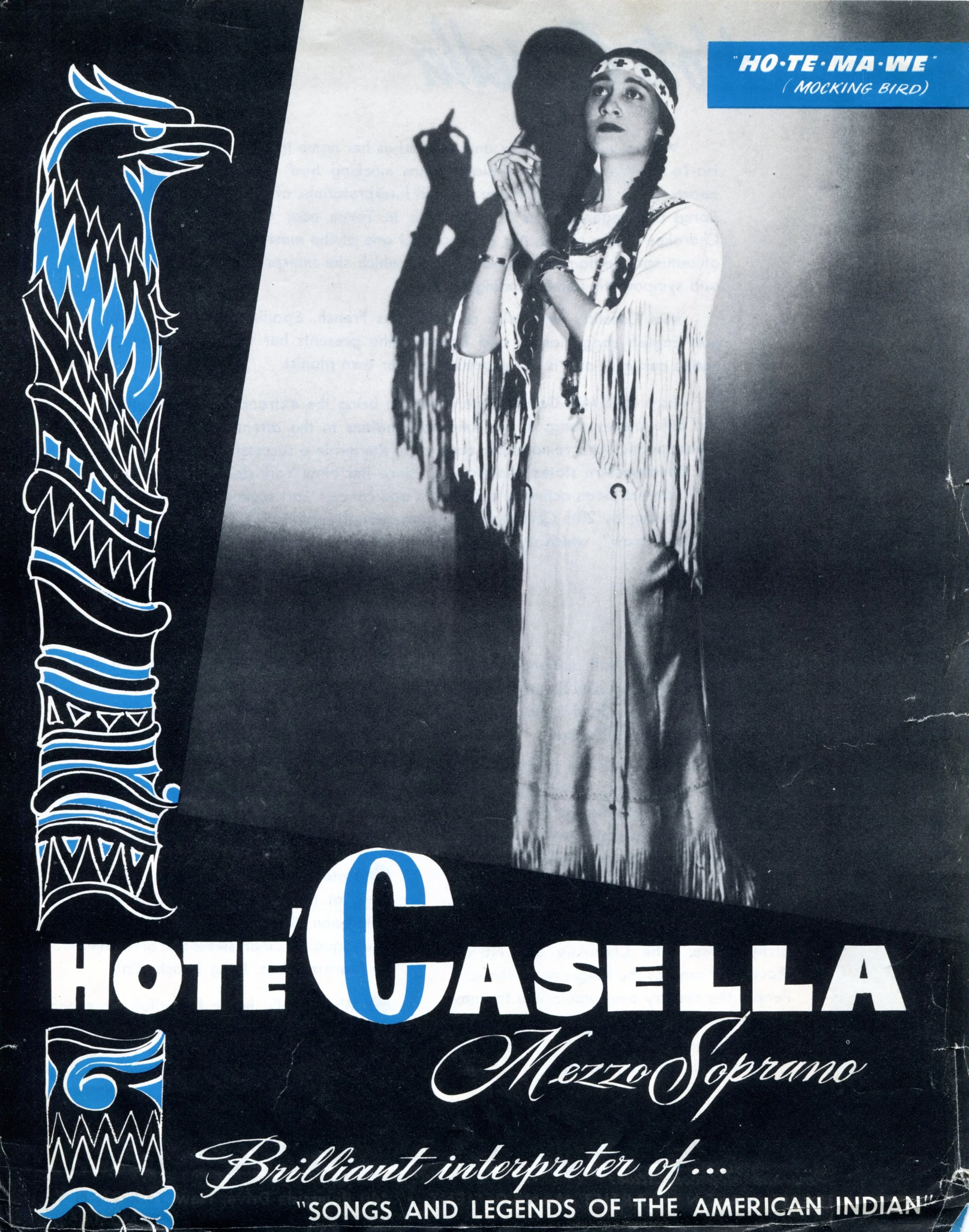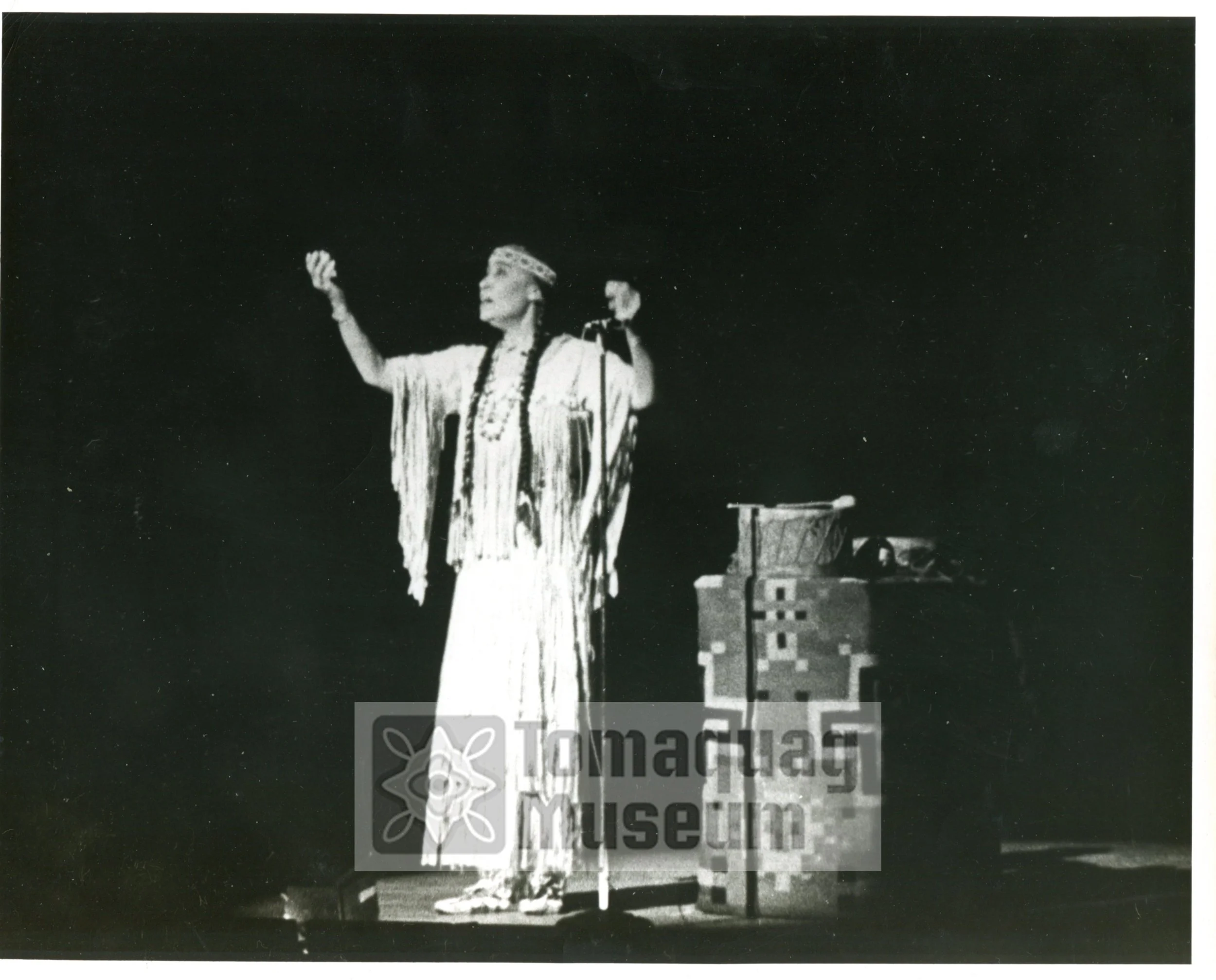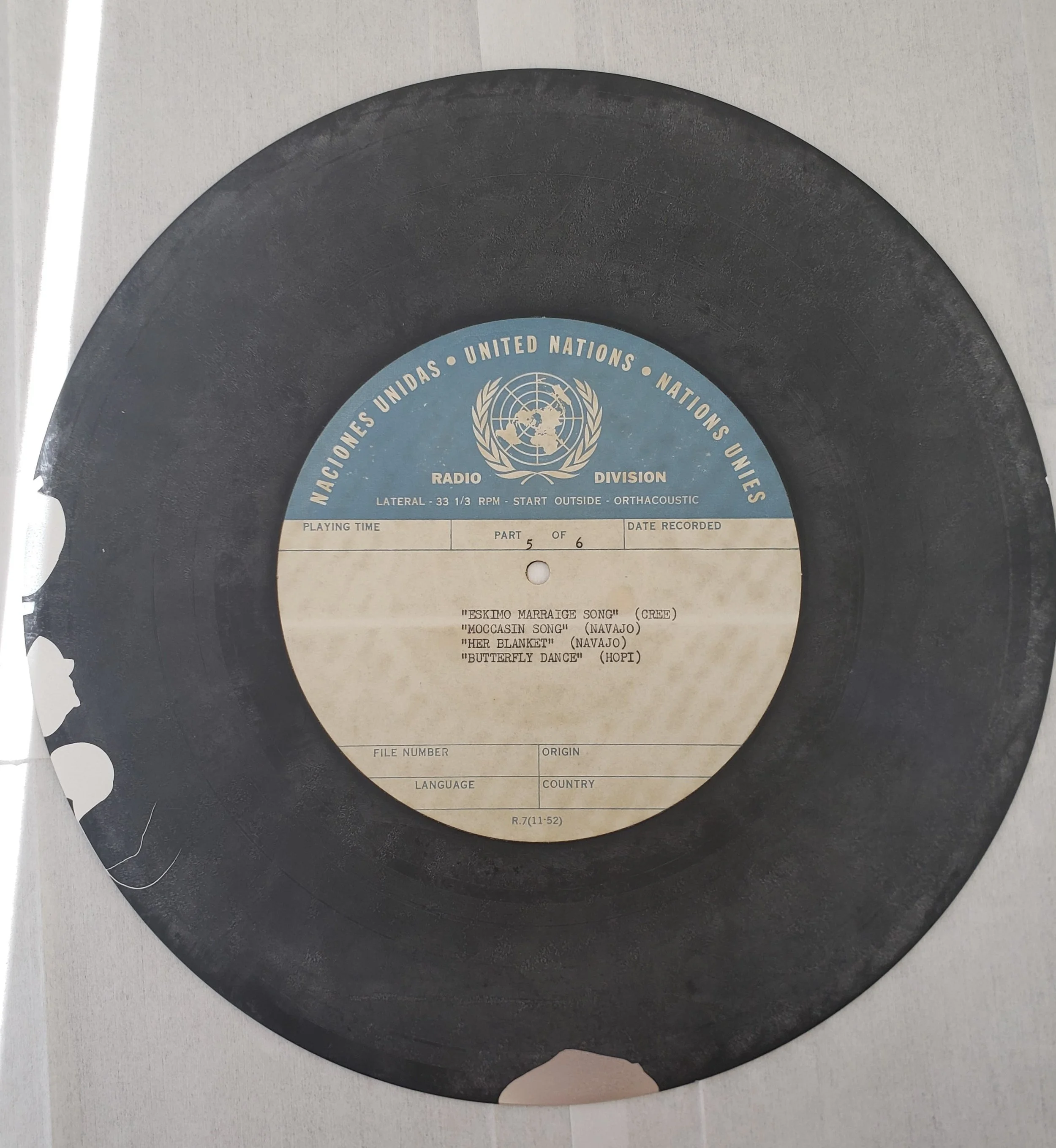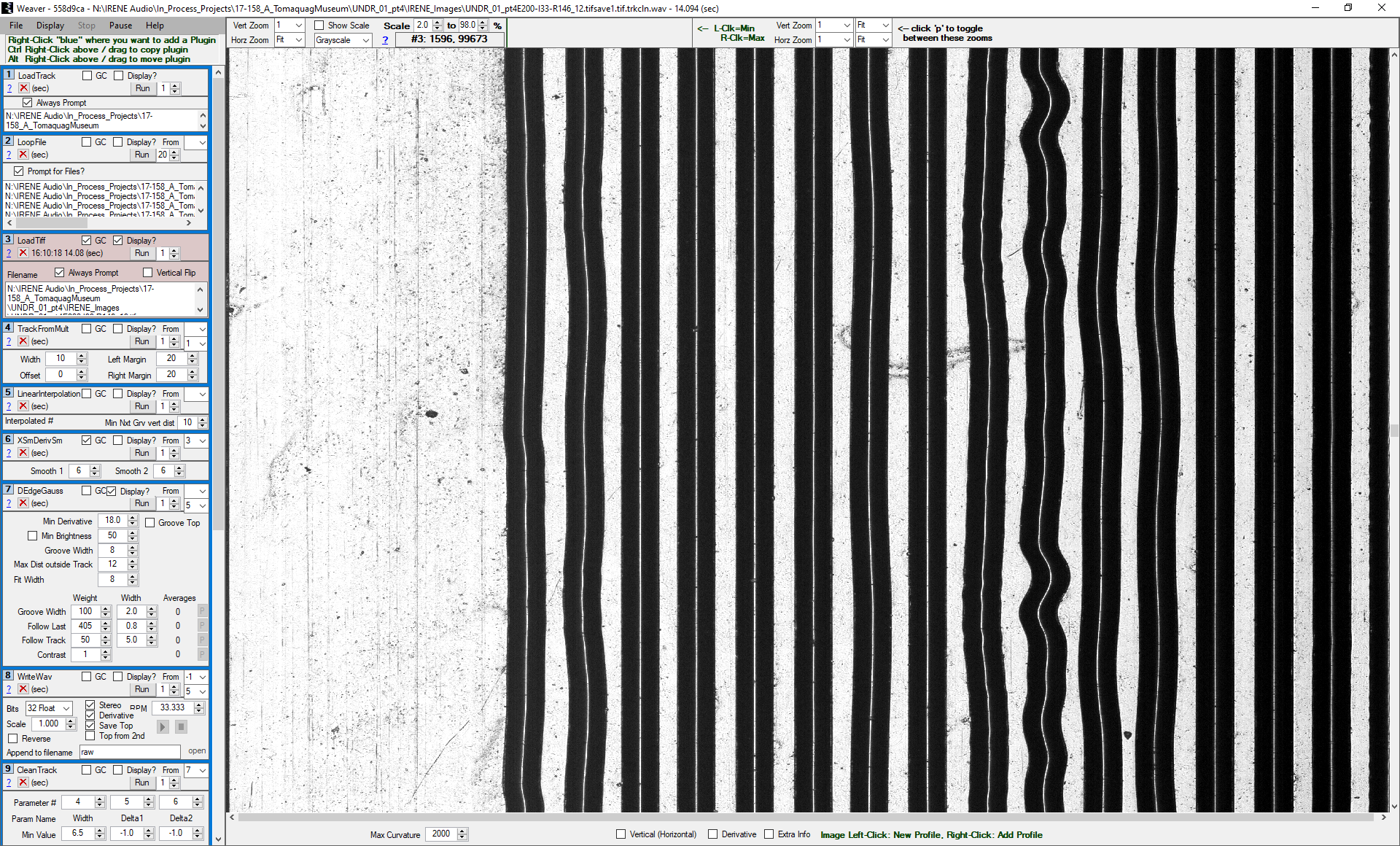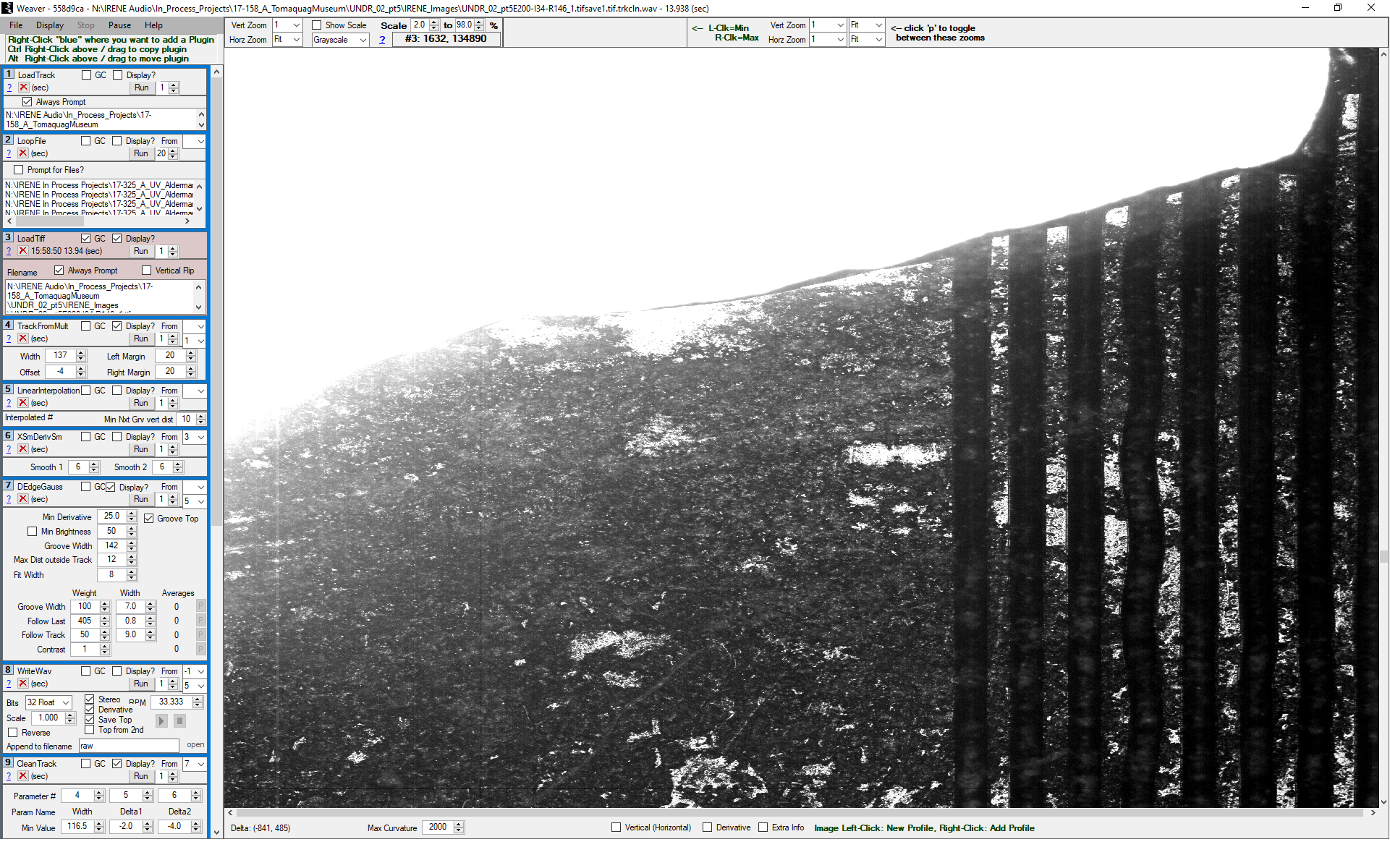From The Archives: IRENE Meets Hoté Casella
Belonging(s): “A close relationship among a group and personal or public effects
“Asco wequassinummis, neetompooag” (Hello my friends)!
Welcome to another installment of the Belongings Blog’s From the Archives series where Collections and Archive Manager Anthony Belz shares some of the most interesting items found in the Tomaquag Museum Archive. For this installment, we are going to discuss how technology can resurrect what otherwise would be lost to history, due to degradation of a long lost audio medium.
Hote Casella, a Cherokee mezzo-soprano singer whom I wrote about six years ago and was my very first blog post for the museum, seven years ago and just about a year and a half after I had begun my tenure at the Tomaquag Museum, back when I was the Museum Archivist.
First a little background about me. When I first began pursuing my Master’s of Library and Information Studies degree, I really wanted to focus on audio preservation. When I was 21 years old, I attended recording school to become a professional audio engineer, a career I never managed to bring to fruition. I’d always been one who deeply appreciates recorded music and the technology that was historically used to capture music for prosperity and for future generations. From wax cylinder recordings, to 78s, wire recordings, and eventually Long Player vinyl records, cassettes and CDs, I was always fascinated by the different ways music (and oral histories) have been captured on physical mediums and reproduced for us to hear and enjoy. And as a fan of archival recordings and the preservation methods used to ensure the music of the past was available to those in the present was a major motivating factor for me personally in becoming an archivist. For my Management of Special Collections and Archives class, I wrote my research paper on audio mediums, their chemical makeup, the technologies used to create and capture sound waves, and the machines used for playback and how to best preserve each type of medium.
When I first began my position as Museum Archivist at the Tomaquag Museum in January 2017, I began to remove archival materials from incorrectly stored places, such as closets, storage cabinets, under tables, etc.-all the nooks and crannies you could imagine things being stored. The museum itself is a very small place located in a house, so over time as the staff and space expanded, the collections were stored anywhere space could be found. Back then the archives in the room where it currently resides was a newly acquired room that allowed for the first time a space dedicated specifically for the archives. One of my first tasks was then to unbox all the storage bins of archival materials that were brought upstairs to the new archive space. Part of this relocation and consolidation were storage areas in the museum exhibit space that ultimately belonged upstairs. One day, as we were emptying an old heavy steel cabinet, I came across three records. But these weren’t ordinary vinyl records, they were different. They were virtually the same size as a standard Long Play (L.P.) vinyl record, but they didn't look quite the same. First of all, they had typed, not printed titles and were chipped in some places revealing a metallic interior separate from the material that coated them. Unusual. After bringing them upstairs for storage, I did some research and discovered that these records were a type of record produced in the 1930s-1950s, referred to as lacquer aluminum core records, which were a type of blank record that could be directly recorded on to. These records were popular with people who did field recordings of oral histories or music, such as John and Alan Lomax, who brought massive recording machines and these blank discs to the deep south to record blues and other folk musicians, because it was a very stable recording mechanism at the time. Turns out, what was good for that time period is not good for preservation in the long term. These records have what archivists’ call inherent vice, meaning that the materials used in making these records will over time deteriorate due to the chemicals used to create them. In the case of many aluminum core lacquer records, the inherent vice is usually castor oil used in mixing the matrix that is the recording medium that covers the aluminum core creating a white dusty appearance like a mold and had delaminated and becomes brittle, cracking and separating the lacquer medium from the aluminum core.
Hoté Casella Promotional Flyer. Unknown date. Tomaquag Museum Archives.
Hoté Casella Promotional Flyer (Reverse). Unknown date. Tomaquag Museum Archives.
Hoté Casella Performing. Unknown date. Tomaquag Museum Archives.
Hoté Casella Promotional Flyer. From Teepee to Totem Pole. Unknown date. Tomaquag Museum Archives.
Courtesy of the North East Document Conservation Center
Courtesy of the North East Document Conservation Center
Courtesy of the North East Document Conservation Center
Courtesy of the North East Document Conservation Center
Courtesy of the North East Document Conservation Center
Courtesy of the North East Document Conservation Center
Courtesy of the North East Document Conservation Center
Courtesy of the North East Document Conservation Center
Courtesy of the North East Document Conservation Center
Courtesy of the North East Document Conservation Center
Courtesy of the North East Document Conservation Center
Track Listing: (Note-Navajo=Dine and Chippewa=Ojibwe)
Disc 1:
Part 1 of 6 “Sunrise Call of “Echo Song” (Zuni)
Part 4 of 6 “Love Song” (Navajo) “Happy Song,” Chi Li Neh Hay Meh,” “In Her Birch Canoe” (Chippewa)
Disc 2:
Part 3 of 6 “Blanket Song or “Wooing Song” (Zuni), “Sunset Song” (Zuni) “Indian Fire Drill Song” (Apache & Mohave)
Part 5 of 6 “Eskimo Marriage Song” (Cree), “Moccasin Song” (Navajo), “Her Blanket” (Navajo), “Butterfly Dance” (Hopi)
Disc 3:
Part 2 of 7 “Lullaby” (Zuni) a. Incantation Upon a Sleeping Infant b. Invocation to the Sun God
Part 5 of 7 “In Her Birch Canoe (Chippewa), “Moccasin Song” (Navajo), “Her Blanket (Navajo), “Butterfly Dance” (Hopi)

